Syed Akhter Hossain
Deep Learning Based Classification System For Recognizing Local Spinach
Jan 06, 2022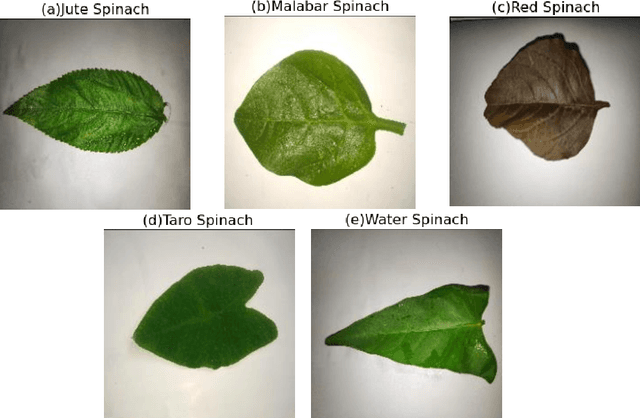
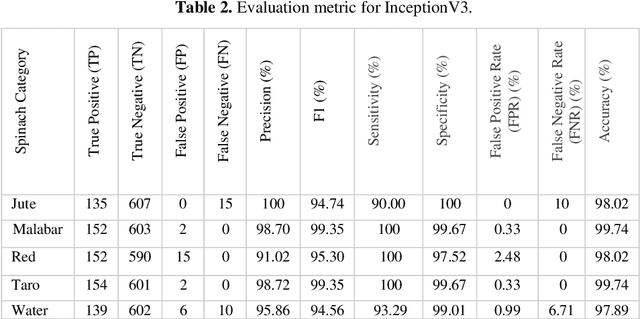

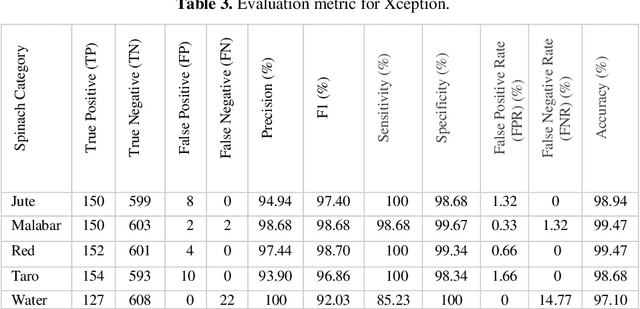
Abstract:A deep learning model gives an incredible result for image processing by studying from the trained dataset. Spinach is a leaf vegetable that contains vitamins and nutrients. In our research, a Deep learning method has been used that can automatically identify spinach and this method has a dataset of a total of five species of spinach that contains 3785 images. Four Convolutional Neural Network (CNN) models were used to classify our spinach. These models give more accurate results for image classification. Before applying these models there is some preprocessing of the image data. For the preprocessing of data, some methods need to happen. Those are RGB conversion, filtering, resize & rescaling, and categorization. After applying these methods image data are pre-processed and ready to be used in the classifier algorithms. The accuracy of these classifiers is in between 98.68% - 99.79%. Among those models, VGG16 achieved the highest accuracy of 99.79%.
Transformer Based Bengali Chatbot Using General Knowledge Dataset
Nov 09, 2021
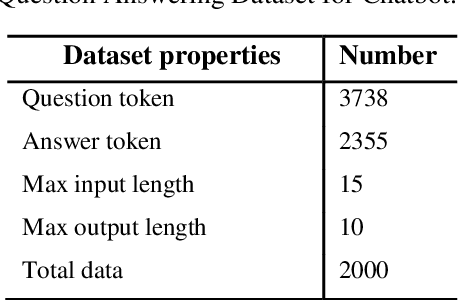
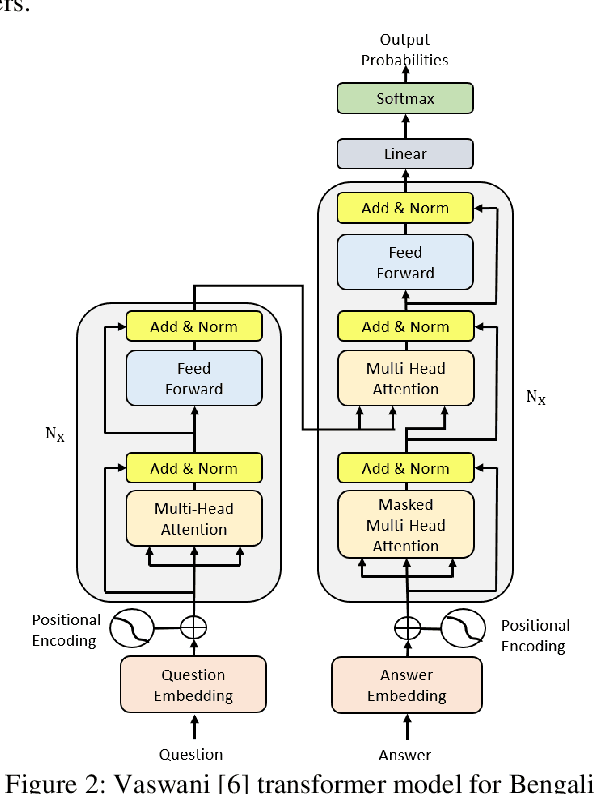
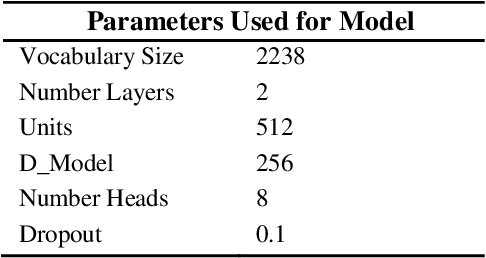
Abstract:An AI chatbot provides an impressive response after learning from the trained dataset. In this decade, most of the research work demonstrates that deep neural models superior to any other model. RNN model regularly used for determining the sequence-related problem like a question and it answers. This approach acquainted with everyone as seq2seq learning. In a seq2seq model mechanism, it has encoder and decoder. The encoder embedded any input sequence, and the decoder embedded output sequence. For reinforcing the seq2seq model performance, attention mechanism added into the encoder and decoder. After that, the transformer model has introduced itself as a high-performance model with multiple attention mechanism for solving the sequence-related dilemma. This model reduces training time compared with RNN based model and also achieved state-of-the-art performance for sequence transduction. In this research, we applied the transformer model for Bengali general knowledge chatbot based on the Bengali general knowledge Question Answer (QA) dataset. It scores 85.0 BLEU on the applied QA data. To check the comparison of the transformer model performance, we trained the seq2seq model with attention on our dataset that scores 23.5 BLEU.
MatriVasha: A Multipurpose Comprehensive Database for Bangla Handwritten Compound Characters
May 06, 2020



Abstract:At present, recognition of the Bangla handwriting compound character has been an essential issue for many years. In recent years there have been application-based researches in machine learning, and deep learning, which is gained interest, and most notably is handwriting recognition because it has a tremendous application such as Bangla OCR. MatrriVasha, the project which can recognize Bangla, handwritten several compound characters. Currently, compound character recognition is an important topic due to its variant application, and helps to create old forms, and information digitization with reliability. But unfortunately, there is a lack of a comprehensive dataset that can categorize all types of Bangla compound characters. MatrriVasha is an attempt to align compound character, and it's challenging because each person has a unique style of writing shapes. After all, MatrriVasha has proposed a dataset that intends to recognize Bangla 120(one hundred twenty) compound characters that consist of 2552(two thousand five hundred fifty-two) isolated handwritten characters written unique writers which were collected from within Bangladesh. This dataset faced problems in terms of the district, age, and gender-based written related research because the samples were collected that includes a verity of the district, age group, and the equal number of males, and females. As of now, our proposed dataset is so far the most extensive dataset for Bangla compound characters. It is intended to frame the acknowledgment technique for handwritten Bangla compound character. In the future, this dataset will be made publicly available to help to widen the research.
InceptB: A CNN Based Classification Approach for Recognizing Traditional Bengali Games
Sep 16, 2018


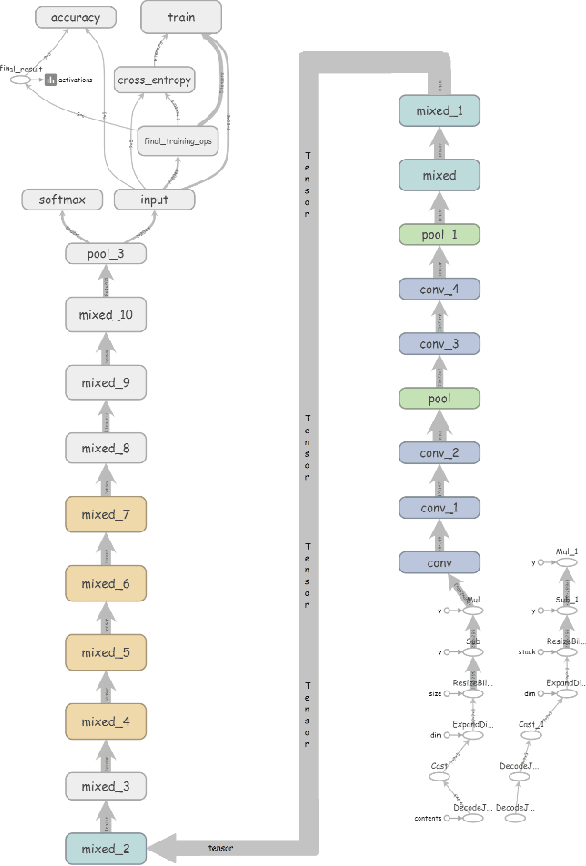
Abstract:Sports activities are an integral part of our day to day life. Introducing autonomous decision making and predictive models to recognize and analyze different sports events and activities has become an emerging trend in computer vision arena. Albeit the advances and vivid applications of artificial intelligence and computer vision in recognizing different popular western games, there remains a very minimal amount of efforts in the application of computer vision in recognizing traditional Bangladeshi games. We, in this paper, have described a novel Deep Learning based approach for recognizing traditional Bengali games. We have retrained the final layer of the renowned Inception V3 architecture developed by Google for our classification approach. Our approach shows promising results with an average accuracy of 80% approximately in correctly recognizing among 5 traditional Bangladeshi sports events.
 Add to Chrome
Add to Chrome Add to Firefox
Add to Firefox Add to Edge
Add to Edge